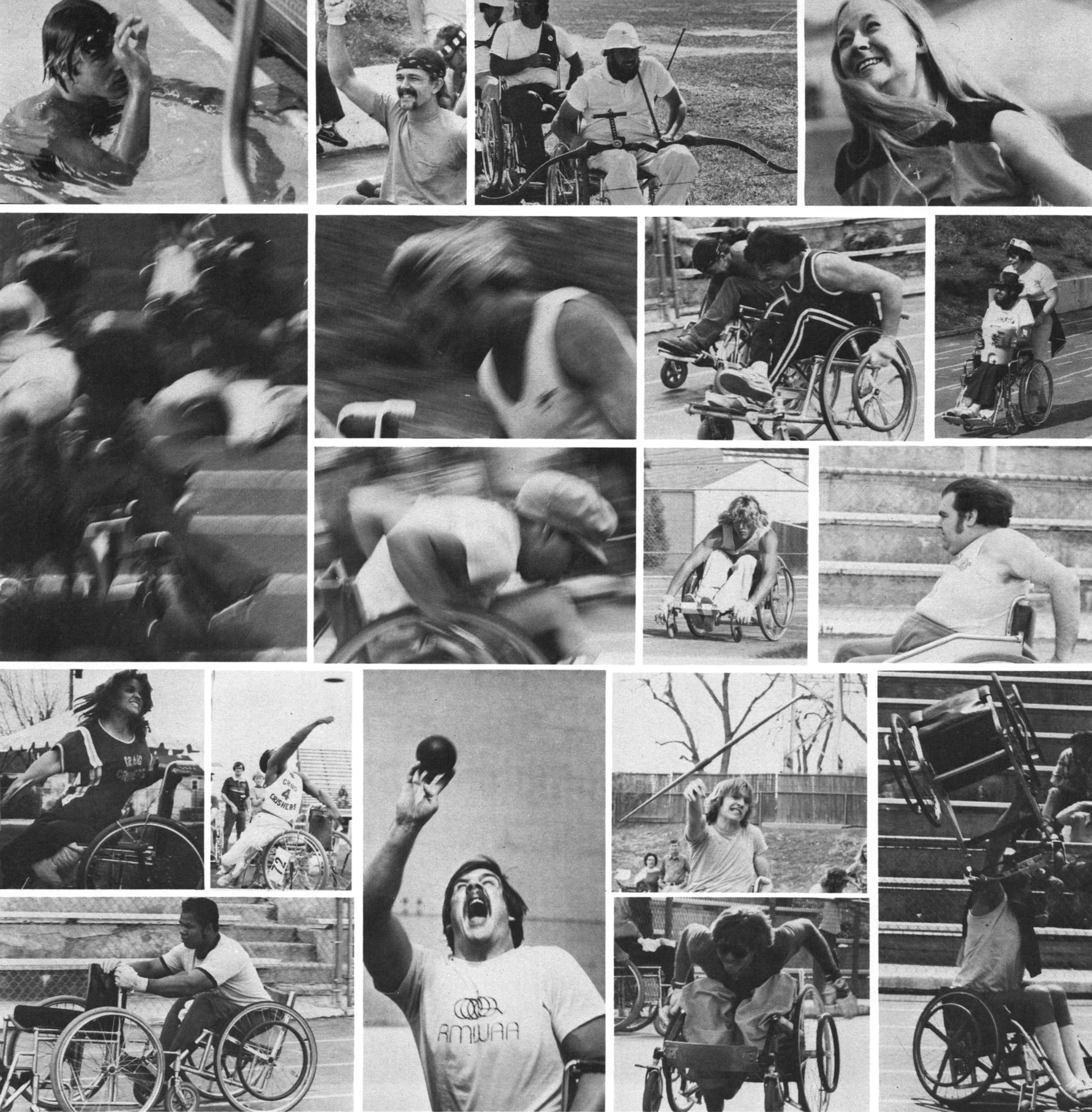Recreation#
Generalizations#
Recreation, for a para of any level, is a cinch. Choose from any of the sports and activities listed below and add a dozen of your own. Recreation for a quad is more limited, but still very available. If you are a high injury, and if some of these activities seem like lousy substitutes for what you once could do, you should know this: As you and your injury mellow through a little time, you’ll find that you don’t think much about walking. Nor will you think wistfully about skiing or diving or whatever you used to do. You’ll start to think, with interest and pleasure, about the things you can do now. Your body, at least as much as your mind, learns eventually that what was has very little relevance to what is. What does exist, recreationally, is a host of possibilities.
Specifics#
There are all the obvious diversionary activities: reading, knitting, cards, air hockey and shuffleboard are five of hundreds. Hobbies: stamp collecting, photography (controls for quads have been contrived), electronics, CB and ham radio (there’s a blow device so quads can send morse code). Social: sex, dancing, (disco, square or any other kind).
The arts: writing, drama, music, cinema, painting (there are now orthodontically fitted mouthpieces for holding brushes). There’s something rec departments call Contemporary Activities: I think it means frisbee and thumb wrestling. Getting out: gardening, your car, all terrain vehicles, dune buggies, trikes, motorcycles (with or without a sidecar which accommodates the chair and rider and allows him to drive). Hunting and fishing (there are anti-gravity devices to facilitate holding a gun or rod, and laws exist which allow you to shoot from a vehicle). Travel. Flying and soaring (hand controls are available).
Indoor sports: Bowling (quads can use a suitcase handle release or an aiming device), darts. Pool and billiards. Martial arts. Fencing. Table tennis. Weight lifting. Basketball— when played well, wheelchair basketball beats the AB’d kind.
Outdoor sports: Croquet. Wind surfing. Sailing. Swimming (all strokes and all distances). Riding horses (saddles have been adapted). Pulks (sleds which can be controlled on ski slopes or self-propelled cross country). Tennis. Volleyball. Football—really! Cross Country. Kayaking (a low para can roll, i.e., right himself after a capsize, but you don’t have to be able to roll). Rafting. Canoeing. Track and field events— dashes and pushes, from 40 meters to 26-mile marathons, shot, discus, javelin. Archery — excellent for quads.
If you want recreation, it doesn’t matter how you get it. Take it as it comes. When you’re ready for some fun, it’s there waiting for you. And if you’re down on wheelchair recreation, please read the next section on the wheelchair games. Or read the Susan Schapiro, West Brownlow, Mary Wilson, Cliff Crase, Syd Jacobs, and Mark Johnson profiles.
And then again, in SCI as in the rest of life, a lot of us get our kicks and rewards entirely from our jobs and relationships. You don’t have to be a jock or a chess master. But if you want to be, you can.
Wheelchair Games#
May, 1979. The Rocky Mountain Regional Wheelchair Games. I knew ahead of time that I’d hate the whole show, because I knew that the Games require gimps to do badly, and imitatively, what they could once do well. Why do something that so blatantly displays our limited function? Our courageous smiles? Besides, I don’t like competition. To hell with the team, show me the singular beauty of perfect execution. I came, in short, to scoff.
Classification: This is the first event and is dominated by doctors. They examine the contestants and classify them according to physical function. The idea is to allow people to compete against others with similar abilities and disabilities. Class V includes single below-the-knee amputations, relatively minor neurological damage and hangnails. V’s often walk away from their chairs after the event. Class I has three subdivisions, but is generally for quads. As a T12, I would be a IV. Now one of the reasons I always thought golf was a silly game was because of the handicap system. Here it is for real. What’s your handicap? Uh, sir, I can’t seem to walk. OK, you’re a III.
Things picked up when the events started for real. That evening, it was table tennis and slalom. The table tennis was fine, and the slalom showed me some real skills, yet I refused to relinquish my right to wallow in sour grapes.
Saturday morning. Light chairs, long chairs, chairs slung low, chairs slung back, sweet swung-low chariots. People sitting on the grass giving their chairs fine tuneups. How’s your anti-flutter? Axle positions by the dozens. Nine-clip wheels. One hundred psi tires. Low mass casters. Spiders and small handrim overdrive. Camber plates. In this crowd, quads included, my chair and I are precambrian.
Realization: These people are real athletes. Another: Bodies in wheelchairs can be beautiful. Lines of perfection on Mikel Strole’s face as she psyches herself for the discus. A quad gives everything to complete his race, and I know I’ve seen a kind of beauty I don’t find elsewhere. An above-the-knee double amputee passes a low para at the end of a 1,500-meter push, and it’s done with such spectacular strategy and grace that I’m dewy-eyed. West Brownlow, classified IC, joyfully fills in on relays for a missing II or III because he really wants to run. It’s beautiful. Our lives are partially run by the need to see things done very well or very resolutely. There’s no difference. We’re all suckers for the hero in one another.
All those healthy bodies speeding through classified space. Team feelings. Competitive feelings. Normalcy feelings. If you’re into it, it’s a great socialization machine. If you’re not, try watching. It might do something nice for your sense of self-image.


